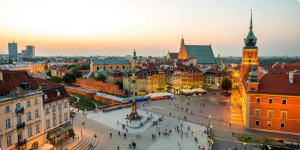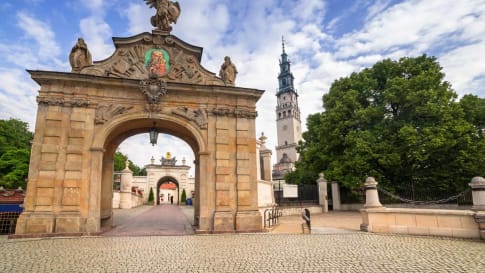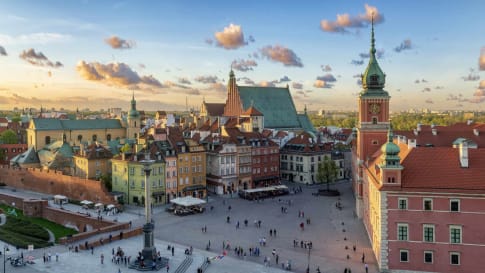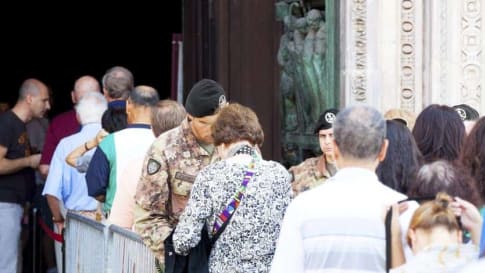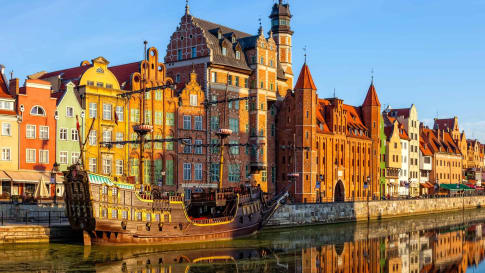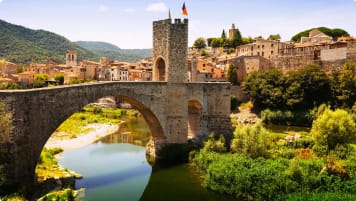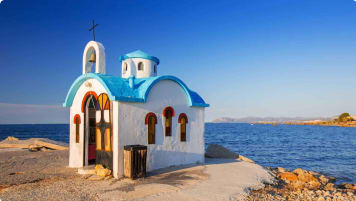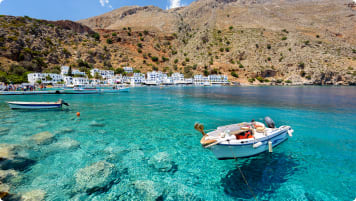Exploring Poland | Poland Small Group Tour
Odyssey's European tour of Poland provides the guests with authentic experiences in a range of key historical destinations to enjoy. Your tour leader supported by knowledgeable local guides who provide daily itineraries that often take you off the beaten path to learn more about the places visited.
From €8,143EUR
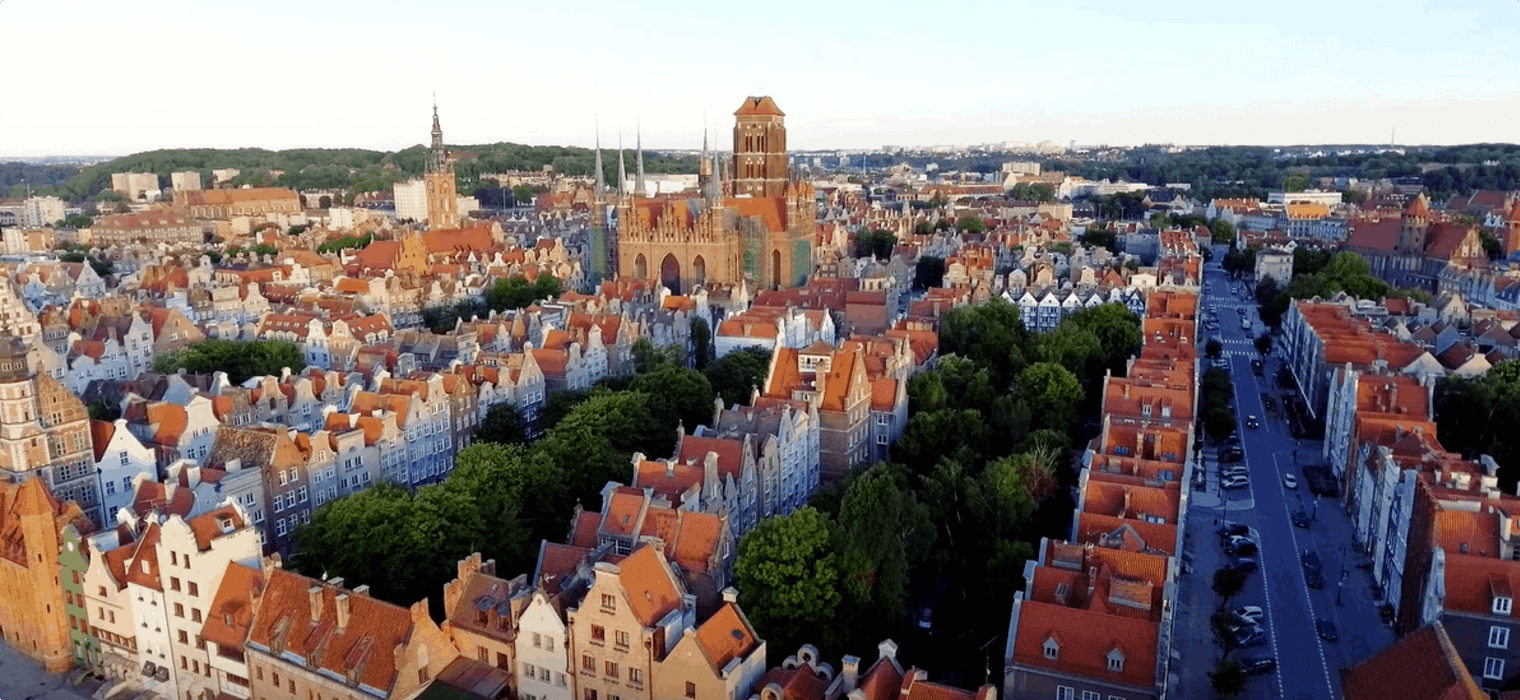
Highlights
- 1. Take a two-hour canal tour of the Elblag Canal, famous for its ingenious system of using inclined planes to move vessels between two lakes.
- 2. Walk through the subterranean salt mines of Wieliczka, a unique and world-class attraction that holds UNESCO World Heritage status.
- 3. View the monuments of Krakow and visit the Kazimierz district, the historical centre of Jewish life in the city.
- 4. Admire the medieval castles and watchtowers comprising the Eagle's Nests Trail, a chain of strongholds built to protect Krakow.

Departure Dates
| Departure Date | Price |
|---|---|
| 01 June 2025 Ends 21 June 2025 • 21 days €8,143 Twin €9,459 Single Available | Selected |
| 28 September 2025 Ends 18 October 2025 • 21 days €8,388 Twin €9,459 Single Available | |
| 31 May 2026 Ends 20 June 2026 • 21 days €8,760 Twin €9,886 Single Available | |
| 04 October 2026 Ends 24 October 2026 • 21 days €8,760 Twin €9,886 Single Available | |
| 25 April 2027 Ends 15 May 2027 • 21 days €9,004 Twin €10,130 Single Available | |
| 03 October 2027 Ends 23 October 2027 • 21 days €9,004 Twin €10,130 Single Available |
Exploring Poland | Small Group Tour
Take a trip through Polish history with Odyssey Travellers Exploring Poland small group tour. This tour, especially designed for mature and senior travellers, begins and ends in Warsaw, the capital and largest city of this central European country, with multiple stops in small towns with big histories.
We will view the grand monuments of Warsaw and Krakow and trace the path of the Vistula River, visiting the towns of Kazimierz Dolny with its Renaissance architecture, Baranow Sandomierski with its grand 16th century castle, Wieliczka with its UNESCO World Heritage labyrinthine salt mine, and other places that shaped the heart and soul of Poland. We will also take time to visit the homes and learn more about the life of Polish luminaries such as Frédéric Chopin and Nicolaus Copernicus.
A united Kingdom of Poland in the mid-1500s formed one of the largest countries in Europe, and was noteworthy as well for adopting the continent's first written national constitution in 1791. Partitioned after the wars of the 17th century, Poland was restored as a nation in 1918. The second World War and the Holocaust would ravage Poland and inflict untold misery on its people, many of whom were forced to migrate to other countries. Poland would rise again into a regional power in the 21st century. Every year, it welcomes many travellers eager to know more about its history and see its natural beauty.
You can learn more about Poland with our country profile where all other tour departures are listed as well. For more details of this tour, click the ‘Top 5’ or ‘Itinerary’ buttons above! If you’re keen to experience this tour, please call or send an email. Or, to book, simply fill in the form on the right-hand side of this page.
Odyssey Traveller regularly offers tours designed for the active senior or mature traveller to enjoy in a small group holiday and learning environment. We also publish articles to provide more information to both loyal and prospective participants. Articles of possible interest is this two-part post filled with travelling tips for seniors, an article providing some advice for the over-50s with respect to life, exercise & travel, and an important article about practising responsible travel.
Gallery
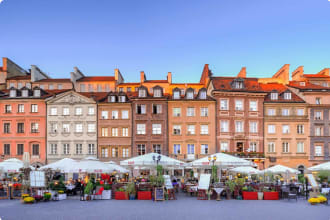
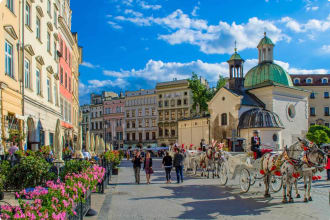
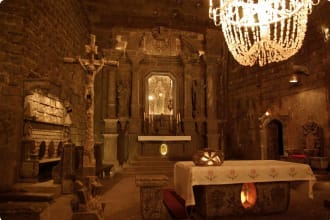
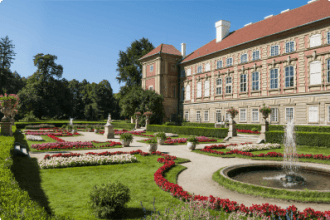
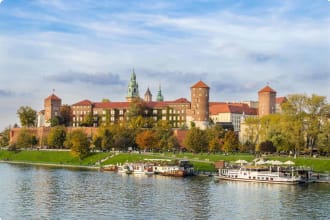

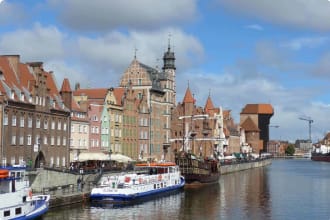
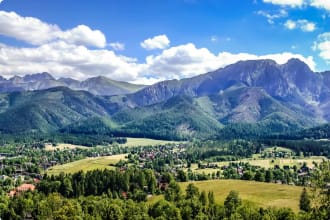
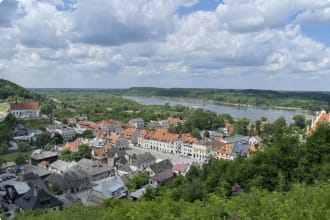
Itinerary
21 days
Day 1: Warsaw
Accommodation: Mercure Warszawa Grand or similar
After arriving in Warsaw we will make our way individually to the hotel. In the evening we will meet together as a group for orientation and a welcome dinner. (D)
Day 2: Warsaw
Accommodation: Mercure Warszawa Grand or similar
Today, we will experience the lavish baroque interiors of the Royal Wilanow Palace and gardens, summer residence of John III, who ruled Poland in the 17th century.
Later, we will tour the estate Zelazowa Wola, birthplace of Frédéric Chopin. Chopin, born in 1810, was a pianist and composer who created several pieces for the solo piano that had tremendous influence on the Romantic era of music.
Zelazowa Wola used to belong to the Skarbek family, and the Chopins came to live in the left wing of the Skarbek manor when Chopin’s father was employed as a tutor. As international interest in Chopin developed, important renovations were initiated on the estate, beginning in 1926. An obelisk bearing the composer’s effigy in bas relief was unveiled. The interior of the manor house was rebuilt in 1948, and in 2010 the grounds were revamped, making it one of the most beautiful parks in Europe. We will visit the house and enjoy a concert (if available) in the village, before returning to our hotel in Warsaw. (B)
Note: Currently, concerts at Zelazowa Wola are only offered on Thursdays, Fridays, Saturdays and Sundays, subject to change.
Day 3: Warsaw
Accommodation: Mercure Warszawa Grand or similar
This morning, we set off on a half-day tour of historic Warsaw.
Warsaw is the capital and largest city of Poland. It’s motto Contemnit procellas (“It defies the storms”) is testament to the city’s perseverance, rising several times from the ashes after being destroyed by wars and invading armies.
On our tour we will visit the Old Town area with its impressive medieval architecture. This historic centre of Warsaw, 85% of which was destroyed by Nazi troops in 1944, has been designated a World Heritage Site following its meticulous restoration after World War II. UNESCO calls it “an outstanding example of a near-total reconstruction of a span of history covering the 13th to the 20th century.”
It is also the site of the Royal Castle Square, a popular meeting place for travellers and locals alike. It marks the beginning of the Royal Route towards the south, a former communication route. We will visit the Royal Castle, along with the iconic Old Town Market Square. We will take a look at the Frédéric Chopin monument in Royal Lazienki Park–a large bronze statue honouring the world-famous Polish composer.
The remainder of the is set aside for your own leisure. (B)
Day 4: Warsaw - Kazimierz Dolny - Sandomierz
Accommodation: Hotel Sarmata or similar
Today we depart Warsaw and head to the small town of Kazimierz Dolny. On arrival, we will explore this city located on the picturesque banks of the Vistula River. Named after the Polish prince Casimir the Just, Kazimierz Dolny is a popular summer retreat, especially among artists and the residents of nearby Warsaw. The Renaissance buildings of the Market Square overlook the ruins of a Gothic castle, sure to delight lovers of architecture. Lanes radiating from the square are filled with art galleries and shops.
We then continue on to Sandomierz, one of Poland’s oldest towns. Inhabited since the Neolithic times, it was an important capital of a duchy in the 12th century, and suffered damage from repeat Tartar invasions in the 13th century. The town is considered to have the finest examples of Gothic and Renaissance urban architecture.
We will do some guided sightseeing before retiring to our hotel for the evening, where we will enjoy a group dinner. (B,D)
Day 5: Sandomierz - Baranow Sandomierski - Lezajsk - Lancut
Accommodation: Hotel Lancut or similar
We set off today for Baranow Sandomierski, a small town in southern Poland where a grand and memorable residence can be found. Baranow Sandomierski Castle is one of the country’s most important Mannerist structures. Completed in the 16th century, the castle used to be the residence of the Lubomirski family and now serves as a historic museum. The Lubomirski family grew prosperous from the salt trade, with several Polish princes among its family members.
We proceed to Lezajsk, a town famous for its basilica and its 17th century pipe organ, lavishly decorated and standing 15 metres high. We’ll then continue our journey to Lancut.
In Lancut, we will view the 17th century Lancut Castle, which was reconstructed in the French Baroque style. It is surrounded by fortifications and magnificent parks, while its interior plays host to exhibitions of paintings, sculpture, china, tapestries, and historic furniture.
Many visitors are attracted to Lancut for its Museum of Carriages. Also located on castle grounds, this features an extraordinary collection of horse-drawn carriages, or “britzkas”, chaises, and hunter’s- and mail-coaches.
We have a group dinner in Lancut, where will stay overnight. (B,D)
Day 6: Lancut - Zakopane
Accommodation: Hotel Wesal or similar
We depart Lancut for Zakopane, stopping en route for a tour of the Wooden Churches of Southern Malopolska. These churches are inscribed on the UNESCO World Heritage list and are the best preserved wooden Gothic churches characteristic of the region and time period. They were built using what is called the horizontal log technique, common in eastern and northern Europe during the Middle Ages and offering an alternative to stone structures.
We continue on to Zakopane in time for a group dinner and live folk music. We will spend two nights at our accommodation here. (B,D)
Day 7: Zakopane
Accommodation: Hotel Wesal or similar
Today, we explore Zakopane, a popular resort town in the south of Poland. Famed for skiing during the winter months and mountain climbing and hiking in summer, we get a sense of its heights with a leisurely cable-car ride to the top of Mt. Gubalowka.
The afternoon is at leisure for you to explore on your own. (B)
Day 8: Zakopane - Wieliczka - Krakow
Accommodation: Leonardo Boutique Hotel Krakow Old Town or similar
Today, we depart the adventure-fueled Zakopane for a different pace in Krakow. Along the way, we will visit the Salt Mine in Wieliczka, a unique and world-class attraction that holds UNESCO World Heritage status. This subterranean salt mine is distributed across nine levels, providing a labyrinth of tunnels and chambers that members of the public can explore.
We’ll also visit the Auschwitz-Birkenau Memorial and Museum and then continue on to Krakow, where we retire for dinner and accommodation for the night.
(B,D)
Day 9: Krakow
Accommodation: Leonardo Boutique Hotel Krakow Old Town or similar
Krakow in the south of Poland lies on both sides of the Vistula River. Krakow’s Old Town has been a World Heritage Site since 1978. Today we will go on a tour of the city, visiting Wawel, an architectural complex on the river’s left bank sitting about 228 metres above sea level. Among the most famous monuments in the complex is the Royal Castle, where kings of Poland have been crowned since 1320.
Today is set aside to be spent at our leisure. You may use this time to rest, or consider optional activities such as a visit to the Oscar Schindler’s Factory Museum or the National Museum.
(B)
Day 10: Krakow
Accommodation: Leonardo Boutique Hotel Krakow Old Town or similar
Today we have a full day tour of Krakow. We will start with a walk around Old Town and view the iconic Florianska and Barbican Gates, the remains of the city’s ancient defences; the market square and the Krakow Cloth Hall (Sukiennice), once the major centre of international trade; and the St Mary’s Church, a Gothic brick edifice striking for its two towers of different heights. We’ll also visit Wawel Castle, which for centuries was the residence of the kings of Poland and the symbol of Polish statehood, the Castle is now one of the country’s premier art museums.
We will also visit the Kazimierz district, south of Old Town. It was historically the centre of Jewish life in Krakow before it was destroyed in World War II. Jewish culture has since rebounded in the district, and here we will listen to traditional klezmer music (music built upon eastern European music in the Jewish tradition) either in concert or during dinner. (B,D)
Day 11: Krakow - Czestochowa
Accommodation: Hotel Mercure Czestochowa Centrum or similar
Today we will take a drive to the limestone cliff Pieskowa Skala. Pieskowa Skala, famous for its well-preserved 14th century castle, is in the valley of the Pradnik River, and we will be treated to charming views of this castle and the Ojców National Park that surrounds it. Ojców National Park is Poland’s smallest national park, but is very biodiverse and packed with sights such as its famed rock formations.
We will experience the Eagle’s Nests Trail, a chain of 25 medieval castles and watchtowers between Krakow and Czestochowa. They were called “eagle’s nests” because the defensive strongholds were constructed on top of limestone cliffs in order to protect Krakow, the former capital. We will take a closer look at the ruins of Ogrodzieniec Castle.
We will then drive to Czestochowa and visit the Jasna Gora Monastery, a pilgrimage destination and home of the image of the Black Madonna, said to be miraculous.
In the evening we enjoy a group dinner at the hotel. (B,D)
Day 12: Czestochowa - Wroclaw
Accommodation: Mercure Wroclaw Centrum or similar
We travel on to Wroclaw this morning, located in western Poland has a history stretching back a thousand years and has been part of various kingdoms, including the Kingdom of Poland, Kingdom of Hungary, the Habsburg Monarchy, Prussia, and Germany.
In the afternoon we will have a sightseeing tour in this historically rich city, visiting its Old Town with the colourful tenement houses and Town Hall on the Market Square.
We will also visit the beautiful Aula Leopoldina, a Baroque Hall in the University of Wroclaw, named after the Holy Roman Emperor Leopold I; and Panorama Raclawicka (Racklawice Panorama), a circular panorama from the 19th century depicting the Battle of Racklawice, one of the first Polish battles in the people’s uprising against Russia. (B)
Day 13: Wroclaw - Swidnica - Ksiaz - Walim - Wroclaw
Accommodation: Mercure Wroclaw Centrum or similar
From Wroclaw we will venture out to tour the timber-framed Churches of Peace in Swidnica, a World Heritage Site and erected during the Peace of Westphalia in 1648 that ended the European wars of religion. We will be provided an audio guide for this tour.
We will then see the Ksiaz Castle, which sits on a wooded hilltop. Owned by many families through the years, it became the seat of the Hochberg family in the 16th century until it was seized by the Nazis in the 1940s to serve as the residence of Adolf Hitler.
Our next stop is in Walim where we visit the Riese project for an underground tour. Riese (Giant) is the code name for a construction project of Nazi Germany in 1943-1945, consisting of seven underground structures located in the Owl Mountains in Lower Silesia, previously Germany, now a territory of Poland
We return to Wroclaw for the night. (B)
Day 14: Wroclaw - Poznan
Accommodation: NH Poznan or similar
Today we will depart Wroclaw and travel to Poznan, a city in west-central Poland. En route we will visit the Kornik Castle in the town of the same name. The castle was built in the 14th century and rebuilt in the 19th century in neo-Gothic style. The castle houses a collection of furniture, paintings, sculptures, and armaments, and is surrounded by a beautiful park.
We will continue on to Poznan and enjoy a half-day tour, including a visit to the first and oldest Polish cathedral, the 10th century Archcathedral Basilica of St. Peter and St. Paul. (B)
Day 15: Poznan - Gniezno - Torun
Accommodation: Hotel Halo Torun or similar
Today we will push on to Gniezno, about 50 km east of Poznan, for some sightseeing. Gniezno is regarded to be Poland’s first capital and has plenty of historic monuments and medieval art for us to view and appreciate.
In the afternoon, we will stroll around Torun. We will have a guided tour of its Old Town with unique examples of Gothic architecture seen in its churches, burgher’s houses (a “burgher” being the rank of a prosperous citizen in medieval Europe), and defensive walls.
Renaissance-era mathematician and astronomer Nicolaus Copernicus, who proposed the heliocentric (Sun-centred) model of the solar system, was born in Torun, and we will visit the sites connected to his life, including his statue in the market square and his House Museum.
We will stay in Torun for dinner and for the night. (B,D)
Day 16: Torun - Gdansk
Accommodation: Novotel Gdansk Centrum or similar
From Torun we will travel to Gdansk, a port city on the Baltic coast of the country.
In the afternoon we meet our local guide and explore the port city of Gdansk, which sits at the mouth of the Vistula River on the Baltic Sea. We will walk through its historic Old Town, down Dluga Street flanked with architectural wonders, and see Neptun Fountain depicting Neptune the god of the sea, and Artus Court, named after the legendary King Arthur and which was the centre of social life in the 14th century.
(B)
Day 17: Gdansk
Accommodation: Novotel Gdansk Centrum or similar
Today we drive to Oliwa to visit the Oliwa Cathedral, which with a length of 107 meters is the longest church in Poland. It houses a pipe organ, built from 1763 to 1788. We will have a chance to hear this wondrous instrument in a 20-minute concerto while inside the cathedral.
From Oliwa, before returning to Gdansk, we will stop for a relaxing time in Sopot. Sopot is a seaside resort and a major health spa destination. Here, we can walk down Sopot’s wooden pier, flanked by quaint cafes and stretching out into the Bay of Gdansk. At more than 500 metres, this is the longest pier in Europe.
We return to Gdansk and the remainder of the day is at leisure. (B)
Day 18: Gdansk - Malbork - Buczyniec - Mikolajki
Accommodation: Hotel Santa Monica or similar
As we depart Gdansk, we stop to visit the Castle of the Teutonic Order in Malbork. The 13th-century fortified monastery was built originally by the Teutonic Knights, a German Roman Catholic religious and military order, and has been restored several times, resulting in the imposing brick structure we have today.
W continue on to Buczyniec for a two-hour canal tour of the Elblag Canal, which connects Ostroda to the Baltic coast. The Elblag Canal is famous for its ingenious system of inclined planes built to move vessels over a particularly difficult portion (due to a difference in water levels) between Lake Drużno and Lake Jeziorak. It is hailed as one of the most outstanding hydrotechnical solutions in the world.
From there, we make our way to Mikolajki area for overnight and dinner. (B,D)
Day 19: Mikolajki - Swieta Lipka - Reszel - Ketryzn - Mikolajki
We will have a day of sightseeing, visiting the Swieta Lipka Basilica, a Jesuit monastic complex considered the most beautiful Baroque construction in Poland, and the Wolf’s Lair, the ruins of Adolf Hilter’s war headquarters, his first Eastern Front military headquarters in World War II.
We will also visit Reszel Castle, which like the castle in Malbork was built by the Teutonic Order. Our next stop is in Ketryzn where we visit Wolfsschanze ( Wolf’s Lair), the former Adolf Hitler’s war HQ in Gierloz.
(B)
Day 20: Mikolajki - Ruciane-Nida - Warsaw
Today we will go on a boat trip to Ruciane-Nida across the picturesque Masurian Lakes. After this relaxing cruise, we will head back to Warsaw, and enjoy a dinner to say farewell to the group. (B,D)
Day 21: Warsaw
The end of breakfast marks the end of the tour and our services.
Includes / Excludes
What’s included in our Tour
- 20 nights accommodation.
- 20 breakfasts 10 dinners as outlined in the itinerary.
- Applicable entry fees and services of local guides.
- Transport and field trips as indicated.
- Touring by comfortable and modern coach.
- Services of a tour leader.
- Service charges and gratuities.
- Detailed tour information booklet.
What’s not included in our Tour
- Return international airfare and departure taxes.
- Comprehensive international travel insurance.
- Items of a personal nature, such as telephone calls and laundry.
- Meals not specified in the itinerary.
Participants must be able to carry their own luggage, climb and descend stairs, be in good health, mobile and able to participate in 3-5 hours of physical activity per day, the equivalent of walking / hiking up to 8 kilometers per day on uneven ground.
Book now
Make it a private tour
Easing your journey
Crossing international borders with restrictions
The list of requirements to travel internationally has changed and will continue to change for several years. Odyssey is here to assist you in managing your way through these requirements:
For more information see our Crossing international borders with restrictions page.
Book With Confidence
If less than 30 days before your tour starts you are unable to travel as a result of Government travel restrictions, Odyssey Traveller will assist you with a date change, provide you with a credit or process a refund for your booking less any non-recoverable costs.
See Terms and conditions for details.
Peace of Mind Travel
The safety of our travellers, tour leader, local guide and support staff has always been our top priority and with the new guidelines for public health and safety for keeping safe for destinations around the world, we’ve developed our plan to give you peace of mind when travelling with us.
See Peace of Mind Travel for details.
Reading List Download PDF
Poland: A history
Adam Zamoyski
Adam Zamoyski first wrote his history of Poland two years before the collapse of the Soviet Union. This substantially revised and updated edition sets the Soviet era in the context of the rise, fall and remarkable rebirth of an indomitable nation.
In 1797, Russia, Prussia and Austria divided Poland among themselves, rewriting Polish history to show that they had brought much-needed civilisation to a primitive backwater. But the country they wiped off the map had been one of Europe’s largest and most richly varied, born of diverse cultural traditions and one of the boldest constitutional experiments ever attempted. Its destruction ultimately led to two world wars and the Cold War.
Zamoyski’s fully revised history of Poland looks back over a thousand years of turmoil and triumph, chronicling how Poland has been restored at last to its rightful place in Europe.
Pocket History of Poland
Dariusz Sirko (Author), Małgorzata Starszak (Illustrator), Josef Butler (Editor), Anita Prazmowska (Editor)
From its mythic origins through to its medieval period, and more well-known struggles against its own neighbours, The Pocket History of Poland tells Poland's history in its entirety. While this may seem daunting, Sirko imbues the text with his own humour and keen eye for metaphor and euphemism, making it an utterly compelling read. Such is the author's deep appreciation for Poland's national story that moments of levity and wonder are presented appropriately, while the darker elements of Polish history are treated with the gravitas that they deserve. Regardless of your own personal situation, if you are seeking a light read that will both amuse and inform, The Pocket History of Poland makes a perfect read.
Bloodlands: Europe Between Hitler and Stalin
Timothy Snyder
Americans call the Second World War @The Good War." But before it even began, America's wartime ally Josef Stalin had killed millions of his own citizens,and kept killing them during and after the war. Before Hitler was finally defeated, he had murdered six million Jews and nearly as many other Europeans. At war's end, both the German and the Soviet killing sites fell behind the iron curtain, leaving the history of mass killing in darkness. Bloodlands is a new kind of European history, presenting the mass murders committed by the Nazi and Stalinist regimes as two aspects of a single history, in the time and place where they occurred: between Germany and Russia, when Hitler and Stalin both held power. Assiduously researched, deeply humane, and utterly definitive, Bloodlands will be required reading for anyone seeking to understand the central tragedy of modern history.
Last Years of the Teutonic Knights: Lithuania, Poland and the Teutonic Order
William Urban
The Battle of Grunwald was one of the largest battles in Medieval Europe and was the most important in the histories of Poland and Lithuania. It was fought on 15 July 1410 during the Polish-Lithuania-Teutonic War between the alliance of the Kingdom of Poland (led by King Jagiello) and the Grand Duchy of Lithuania (led by Grand Duke Vytautas) against the German-Prussian Teutonic Knights (led by Grand Master Ulrich von Jungingen) and with the assistance of Sigismund, then King of Hungary and Croatia. The Teutonic Knights, a crusading military order, were defeated and most of their leaders were killed or taken prisoner. This defeat would mark the beginning of their decline and they would never again regain their former power. Following the battle, the balance of power shifted in Central and Eastern Europe and so came the rise of the Polish-Lithuanian union as the dominant political and military force. In this compelling account the action takes place in Lithuania, Poland, the Czech Republic, Hungary, Russia and Germany. There are bloody battles; fascinating characters; intrigue; betrayals; sex; unexpected twists of fate; religious heresy and a smattering of saints. There is also the monumental end of one era making way for the beginning of another. AUTHOR: William L Urban is an internationally recognised authority on the history of European warfare. He served as L Morgan Professor of History and International Studies at Monmouth College (Illinois). For several years he was editor of the Journal of Baltic Studies. He has written some two dozen scholarly books including The Teutonic Knights (2003) and Small Wars, and their Influence on the Nation State (2016). 60 colour and b/w images
A Concise History of Poland
Jerzy Lukowski and Hubert Zawadzki
Poland is a tenacious survivor-state: it was wiped off the map in 1795, resurrected after the First World War, apparently annihilated again in the Second World War, and reduced to satellite status of the Soviet Union after 1945. Yet it emerged in the vanguard of resistance to the USSR in the 1980s, albeit as a much more homogeneous entity than it had been in its multi-ethnic past. This book outlines Poland's turbulent and complex history, from its medieval Christian origins to the reassertion of that Christian and European heritage after forty-five years of communism. It describes Poland's transformation since 1989, and explains how Poland navigated its way into a new Commonwealth of Nations in the European Union. Recent years have witnessed significant changes within Poland, Eastern Europe and the wider world. This new edition reflects on these changes, and examines the current issues facing a Poland which some would accuse of being out of touch with 'European values'.
